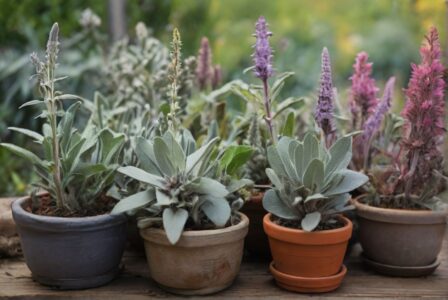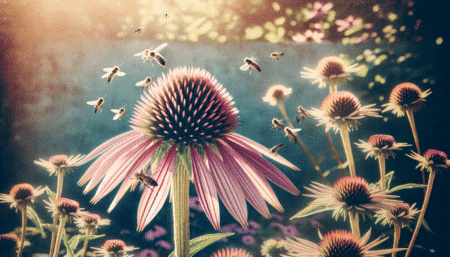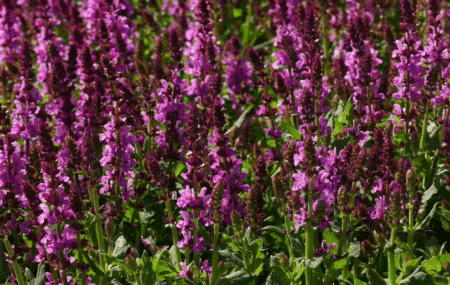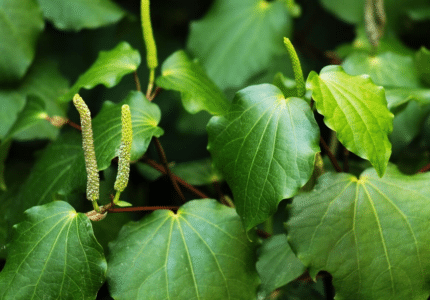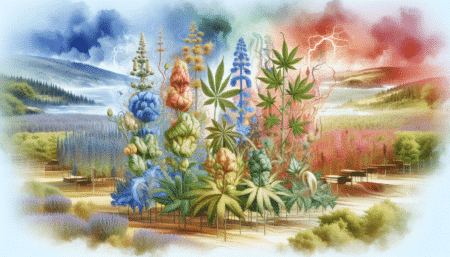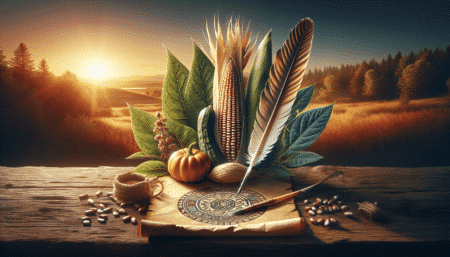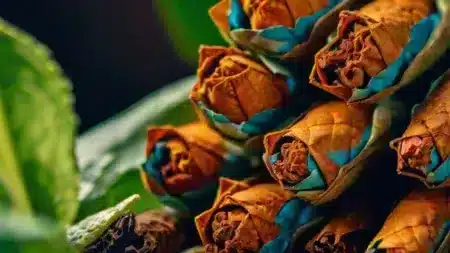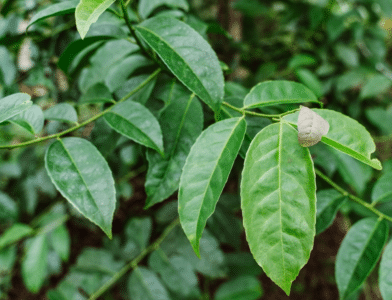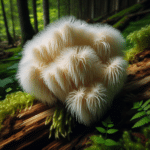- What is chaliponga and what is it used for?
- The history of Chaliponga and its significance in traditional cultures
- The active ingredients in Chaliponga and their effects on the human body
- Areas of application of chaliponga in medicine, spirituality and recreational use
- How to grow and harvest chaliponga correctly
- Growing Diplopterys cabrerana from seed
- Growing Diplopterys cabrerana cuttings - Risks and side effects of consuming chaliponga
- Legal aspects surrounding the ownership and use of chaliponga
- Conclusion: The potential of chaliopnga as a medicinal plant
Here you can find our Diplopterys cabrerana seeds!
Diplopterys cabrerana
In this blog article you will learn all about chaliponga, the liana of enlightenment. Chaliponga is a plant that is native to South America and has been used for centuries by indigenous peoples for its spiritual properties. Immerse yourself in the fascinating world of chaliponga and discover its mystical power.
1. what is chaliponga and what is it used for?
Chaliponga is a plant that is native to the rainforests of South America. It belongs to the Malpighiaceae family and is botanically known as Diplopterys cabrerana. The leaves of this plant contain a variety of active ingredients, including DMT (dimethyltryptamine), which is a psychoactive substance. Due to its strong hallucinogenic properties, chaliponga is traditionally used in shamanic ceremonies to facilitate spiritual experiences and gain deep insights. However, the use of chaliponga extends far beyond its spiritual applications. In medicine, it is being studied for its potential healing effects. Some studies suggest that certain compounds in the plant may have anti-inflammatory and antidepressant properties.
In addition, extracts from chaliponga are also used recreationally, particularly in some psychedelic subcultures. To reap the benefits of chaliponga, you need to know how to grow and harvest the plant properly. There are two main methods: growing by seed and growing by cuttings. Both methods require specific knowledge and skills to achieve optimal results. It is important to note that consuming chaliponga also carries risks. The hallucinogenic effects can be intense and lead to unpredictable mental states. There is also the possibility of side effects such as nausea, vomiting and anxiety. It is therefore important to use chaliponga responsibly and to be well informed before consuming it. Regarding the legal aspects of possessing and using chaliponga, laws vary from country to country. In some countries, cultivation and consumption is legal, while others have stricter regulations. It is important to respect local laws and find out about the legal situation in your own region. In summary, chaliponga is a fascinating plant with a wide range of applications. From its use in traditional cultures for spiritual enlightenment to its potential medicinal properties, it offers great potential for further research and discovery.
2. the history of Chaliponga and its significance in traditional cultures
The history of chaliponga and its importance in traditional cultures is a fascinating subject that gives us an insight into the rich cultural past of this plant. Chaliponga, also known as Diplopterys cabrerana, has been used for centuries by indigenous peoples in the tropical regions of South America. In their traditional practices, this liana plays an important role in spiritual rites and ceremonies. Chaliponga has a long history of use as a medicinal plant and to expand consciousness. The indigenous communities regard it as a gift from nature that gives them access to deeper levels of the spirit. In their traditions, it is said that the ancestors discovered this plant and used its healing properties. The significance of chaliponga extends beyond purely spiritual purposes.
It is also used for medicinal applications as it contains active ingredients that can have potentially positive effects on the human body. These substances can be used, for example, in the treatment of certain diseases or to promote general well-being. In traditional cultures, rituals around chaliponga are closely linked to the belief in the connection between humans and nature. It is about creating harmony and establishing a deeper connection with the universe. These practices are passed down from generation to generation and help to preserve cultural identity. The story of Chaliponga and its importance in traditional cultures is a fascinating example of how plants can play an important role in the lives and beliefs of different peoples. It opens our eyes to the diversity of the world we live in and reminds us that there is still so much to discover.
3. the active ingredients in Chaliponga and their effects on the human body
Chaliponga is a liana that is native to the tropical regions of South America and has been used for centuries by indigenous peoples for its medicinal and spiritual properties. One of the most fascinating aspects of this plant is the active ingredients it contains and their effects on the human body. The main active ingredients in chaliponga are N,N-dimethyltryptamine (DMT) and harmine and harmaline, two monoamine oxidase inhibitors (MAO inhibitors). DMT is a highly psychoactive molecule that can produce hallucinogenic effects when ingested. It is assumed that during the consumption of chaliponga it is protected from degradation in the stomach by the MAO inhibitors and can therefore develop its effect. The effects of consuming chaliponga can be very individual and depend on various factors such as dosage, personal condition and environment.
People often report intense visual experiences, altered consciousness, expanded thinking and a sense of connection with nature or the universe after consuming chaliponga. It is important to note that the use of chaliponga is not without risks. The hallucinogenic effects can be frightening or overwhelming for some people. There is also the potential for unwanted side effects such as nausea, vomiting or palpitations. It is therefore advisable to only consume chaliponga under the supervision of experienced persons and to inform yourself about possible risks in advance. Overall, the active ingredients in chaliponga offer interesting potential for medical applications as well as for spiritual self-exploration. However, it is recommended that consumption is carried out responsibly and with respect for the plant.
4. areas of application of chaliponga in medicine, spirituality and recreational use
Chaliponga is a versatile plant that is used in various areas. It has become very important in medicine due to its healing properties. The ingredients of the chaliponga plant are used to treat various ailments, including gastrointestinal disorders and inflammation. Chaliponga also plays an important role in the spiritual practice of many cultures. It is often used for rituals and ceremonies to enable deeper access to spiritual levels and to gain insights. In addition to its medicinal and spiritual applications, chaliponga is also valued for recreational use. Many people use it, for example, as a natural alternative to synthetic drugs or as a means of relaxation and stress relief.
The consumption of chaliponga can provide an intense experience that allows the user to expand their perception and take on new perspectives. It is important to note that the applications of chaliponga in medicine, spirituality and recreational use continue to be the subject of scientific research. Some promising results have already been obtained, but further studies are needed to understand the full potential of this fascinating plant. Overall, the use of chaliponga in medicine, spirituality and recreational use offers exciting possibilities and a wide range of applications. Although caution is advised and further research is needed, it is clear that this liana of enlightenment can play a significant role in various aspects of human life.
5. how to grow and harvest chaliponga correctly
If you want to grow and harvest chaliponga, there are several methods you can try. One option is to use Diplopterys cabrerana seeds. You can either order these online or find them in specialized nurseries. Keep in mind that the seeds should be fresh and from a trustworthy source. To grow chaliponga successfully, it is important to choose the right location. The plant prefers a semi-shady to sunny spot with moist soil. Make sure the soil is well drained and watered regularly. Once you have prepared the site, you can plant the seeds in small pots or directly in the garden. Cover them lightly with soil and keep them moist. The first seedlings should appear within a few weeks.
Another method is to take cuttings from already established plants. Look for young shoots or side shoots and cut them off carefully. Remove the lowest leaves and place the cutting in a pot with potting compost. Keep the soil moist and place the pot in a warm place with indirect light. Whichever method you choose, be patient during the growing process. Chaliponga takes a few months to reach full maturity. When it is time to harvest, you should carefully cut off the leaves. Be careful not to remove too many leaves at once, as this can affect the growth of the plant. Dry the leaves in a cool, dark place and store them in an airtight container to preserve their potency. Growing and harvesting chaliponga requires some time and attention, but it's worth it for all the benefits this unique plant offers.
- Growing Diplopterys cabrerana from seed
Diplopterys cabrerana, also known as chaliponga, is a plant that is prized for its psychoactive properties. If you are interested in growing this extraordinary plant, you can do so using seeds. The method of growing Diplopterys cabrerana from seed requires patience and care, as there are some specific steps that need to be followed. First of all, you need to obtain high-quality Diplopterys cabrerana seeds. Once you have the seeds, you should clean them thoroughly and then soak them in warm water for about 24 hours. This will stimulate the germination process. Once the seeds have been soaked, prepare a container with well-drained soil. In the container, you can either use individual pots or a larger container, depending on how many seeds you want to grow. Sprinkle a thin layer of soil on the bottom of the container and then carefully place the soaked seeds on top. Then cover them with another thin layer of soil.
Make sure the container is in a warm place and keep the soil moist but not too wet. The optimum temperature is between 25°C - 30°C. The first seedlings should emerge within one to two weeks. It is important that you water them regularly and make sure they get enough light. After about a month, the seedlings should be big enough to be transplanted into their own pots. Growing Diplopterys cabrerana from seed takes time and patience, but will eventually reward you with your own plant of the liana of enlightenment. Once the plant is fully grown, you can harvest its leaves and use them for various purposes. Keep in mind, however, that consuming chaliponga can also entail risks and side effects. Therefore, inform yourself thoroughly about the correct use and possible health effects. Overall, growing Diplopterys cabrerana from seed offers an exciting opportunity to get to grips with this fascinating plant. If you are interested in alternative healing methods or spiritual practices, chaliponga could be an enriching addition.
- Growing Diplopterys cabrerana cuttings
Another method of growing Diplopterys cabrerana is to use cuttings. This process requires a little more effort and patience, but it can be an effective way to achieve an abundant harvest. First of all, you need healthy and mature plants of Chaliponga from which you can cut the cuttings. Make sure the plants have strong roots and are free from disease or pest infestation. To take cuttings, you should make a sharp and clean cut. Select a young shoot that is about 10-15 cm long and has at least two to three pairs of leaves. Cut the shoot at a 45-degree angle to facilitate water penetration. Carefully remove the lower leaves from the cutting and then place it in a pot with well-drained soil or a propagation substrate. Make sure the soil is kept moist by watering regularly or misting the substrate lightly.
It is important to place the cutting in a warm place and avoid direct sunlight. High humidity can also help the cutting to root successfully. You can achieve this by covering the pot with a transparent plastic bag or placing it in a greenhouse. After a few weeks, the cuttings should have developed roots. You can check this by gently pulling on the base and feeling a slight resistance. Once the roots are sufficiently developed, you can transplant the cuttings into larger pots or directly into the soil. The method of growing Diplopterys cabrerana by cuttings requires a little more time and effort than growing from seed, but it can be a reliable way to obtain healthy plants. Remember that it is important to be careful when cutting the cuttings and to create optimal conditions for their development.
6. risks and side effects of consuming chaliponga
The consumption of chaliponga can entail risks and side effects that need to be taken into account. The liana contains psychoactive substances such as DMT, which can have a strong effect on the human mind. Although these active ingredients are used in some cultures for spiritual and medicinal purposes, chaliponga should be used with caution. One possible side effect of chaliponga consumption is nausea. Some people report stomach pain or vomiting after consuming chaliponga extracts. It is believed that certain alkaloids in the plant are responsible for this reaction. It is important to keep a close eye on your own body and consult a doctor if you experience any symptoms. Another risk is that the consumption of chaliponga can trigger psychological effects.
The strong psychoactive substances can cause hallucinations and altered states of consciousness. This can have both positive and negative effects. Some people experience profound spiritual experiences through the use of chaliponga, while others may feel anxious or confused. It has also been reported that long-term use of chaliponga can lead to addiction. Although this has not been extensively researched, individuals with a history of addiction should be cautious and may want to avoid using Chaliponga. In summary, the use of chaliponga can carry risks and side effects. It is important to understand the potential effects on the body and mind and to use this plant responsibly. If you decide to use chaliponga, inform yourself thoroughly about the correct dosage and always seek professional support if in doubt.
7. legal aspects surrounding the ownership and use of chaliponga
Legal aspects surrounding the possession and use of chaliponga are of great importance, especially for people who wish to become involved with this plant. It is important to note that the possession and use of chaliponga may be subject to legal regulations in many countries. As a potential user, it is therefore advisable to find out in advance about the specific laws and regulations in your country or region. In some countries, the possession or trade of chaliponga may be illegal. This is often because the plant contains psychoactive ingredients and is therefore classified as a controlled substance. In such cases, the unauthorized possession or sale of chaliponga can lead to legal consequences. There are also restrictions on the commercial use of chaliponga. For example, if someone intends to manufacture or sell products based on this plant, certain permits or licenses may need to be obtained. It is important to note that legal regulations regarding chaliponga can vary from country to country. Therefore, one should always comply with local laws and seek legal advice if necessary. In summary, there are important legal aspects to consider when owning and using chaliponga. In order to avoid any legal problems, you should obtain comprehensive information about the applicable laws in advance and seek professional advice if necessary.
9 Conclusion: The potential of Challiopnga as a medicinal plant
Chaliponga, also known as Diplopterys cabrerana, is a liana with great potential as a medicinal plant. In this blog article, we have taken an in-depth look at chaliponga and examined various aspects of this fascinating plant. We found out that chaliponga plays an important role in traditional cultures and that its active ingredients can have interesting effects on the human body. Chaliponga has a wide range of applications. It is used in medicine as well as in spiritual and recreational practices. Its psychoactive ingredients can contribute to the expansion of consciousness and enable deep spiritual experiences. When it comes to growing and harvesting chaliponga, there are various methods. The plant can be cultivated using either seeds or cuttings.
With a little patience and care, you can create your own source of this valuable medicinal plant. However, it is important to note that the consumption of chaliponga can also entail risks and side effects. You should therefore inform yourself well in advance and use it responsibly. Legal aspects surrounding the possession and use of chaliponga should also be taken into account. It is important to comply with the applicable laws and to be aware of any restrictions or bans. In summary, chaliponga has great potential as a medicinal plant. Its wide range of applications and interesting active ingredients make it an exciting plant that should be researched further. However, as with all substances, it is important to use it responsibly and to be aware of possible risks and legal aspects.
Further links and book recommendations
- https://de.wikipedia.org/wiki/Diplopterys_cabreranana
- https://en.wikipedia.org/wiki/Diplopterys_cabrerana
- https://wiki.dmt-nexus.me/Diplopterys_cabrerana
- https://www.christian-raetsch.de/Artikel/Artikel/Ayahuasca.html
- https://www.kopp-verlag.at/Ayahuasca.htm?websale8=kopp-verlag.02-06&pi=B0628338&ci=%24_AddOn_%24
Youtube
Note: The information in this article is for informational purposes only and is not intended to replace the advice of a physician or other healthcare professional. Always consult a doctor before using any new herbs or supplements. Furthermore, you should always check whether the cultivation/possession/use/processing of certain plants is permitted in your country. As we only offer ornamental plants in our store, we are only allowed to offer Provide information and advice on the correct care of plants!


